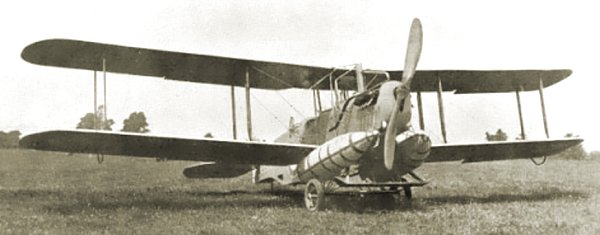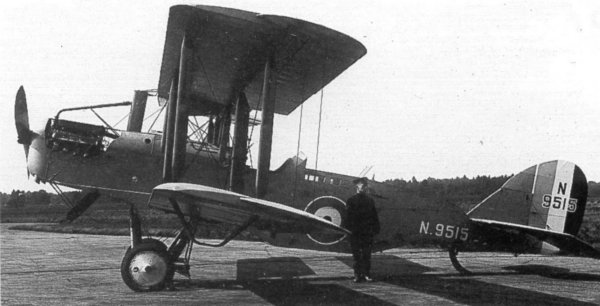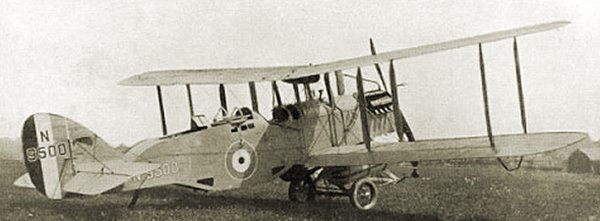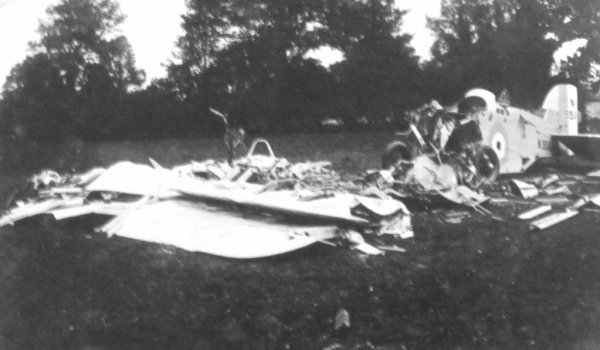Westland Walrus
Westland Walrus
A spotter / reconnaissance aircraft of the 1920s
The Westland Walrus was a British spotter/reconnaissance aircraft built by Westland Aircraft.
In 1919 the Royal Navy had an urgent need for a three-seat spotter/reconnaissance aircraft. In order to save money, it was decided to adapt the existing Airco DH.9A, for which part completed airframes were available in large numbers following the end of the First World War and the subsequent cancellation of production orders. The initial attempt was carried out by Armstrong Whitworth Aircraft, adding provision for an observer and removing the stagger from the wings to produce the Armstrong Whitworth Tadpole.
Further development, however, was passed on to Westland, who further modified the aircraft to produce the Walrus, with a 450 hp (336 kW) Napier Lion II engine replacing the Liberty engine of the DH.9A and Tadpole. Like the DH.9A, the Walrus was a single-engine, two-bay biplane. It was fitted with an extra cockpit for the observer/radio operator behind the gunner's cockpit, while the observer also had a prone position for observing in a ventral pannier. The undercarriage was jettisonable and the aircraft was fitted with floatation bags and hydrovanes to aid safe ditching, together with arresting gear to aid landing on aircraft carriers. The wings were detachable to aid storage. The prototype first flew in early 1921, proving to have poor flying characteristics, being described by Westland's test pilot Stuart Keep as "a vicious beast." Despite this, a further 35 were ordered.
Production aircraft began to be delivered to No. 3 Squadron RAF at RAF Leuchars in 1921. No. 3 Squadron was split up to form independent Fleet Spotter Flights in 1923, although despite the extensive use by the Royal Navy, the Walrus never operated from carriers. The Walrus continued in service in the fleet spotting role until replaced by the Avro Bison and Blackburn Blackburn in late 1925.
For details of the Westland Walrus that crashed at Newton Surmaville in 1921 - click here.
![]()
| General characteristics | |
| Crew: | Three |
| Length: | 29 ft 9 in (9.07 m) |
| Wingspan: | 46 ft 2 in (14.07 m) |
| Height: | 11 ft 7 in (3.53 m) |
| Wing area: | 496 ft² (46.1 m²) |
| Empty weight: | 3,180 lb (1,445 kg) |
| Loaded weight: | 4,998 lb (2,272 kg) |
| Powerplant: | 1 × Napier Lion II 12-cylinder water-cooled W-block piston engine, 450 hp (298 kW) |
| Performance | |
| Maximum speed: | 124 mph (108 knots, 200 km/h) |
| Service ceiling: | 19,000 ft (5,800 m) |
| Rate of climb: | 950 ft/min (290 m/min) |
| Armament | |
| 1 × forward firing Vickers machine gun | |
| 1 or 2 rear Lewis guns on Scarff ring | |
| Production | |
| Number built: | 36 |
| First flight: | 1921 |
All the above text based on / 'borrowed' from Wikipedia.
gallery

Front view of Walrus prototype, with original chassis and wings and inflatable floating bags.

Production Westland Walrus N9515 in August 1921 during handling trials with high lift wing at Martlesham Down.

.... and seen from behind.

On Monday 14 June 1923, Flight Officer James Barclay Rose came to Yeovil to collect a Westland Walrus MK II (N9510) that had been modified and refurbished. He took off and gained around 500 feet but entered a turn as he climbed (later stated to be an 'error of judgement') causing the nose of the Walrus to drop. It dived to the ground, crashing into a field close to the Bunford Lane Flax factory. Flight Officer Rose was killed in the accident and is buried in Yeovil Cemetery.